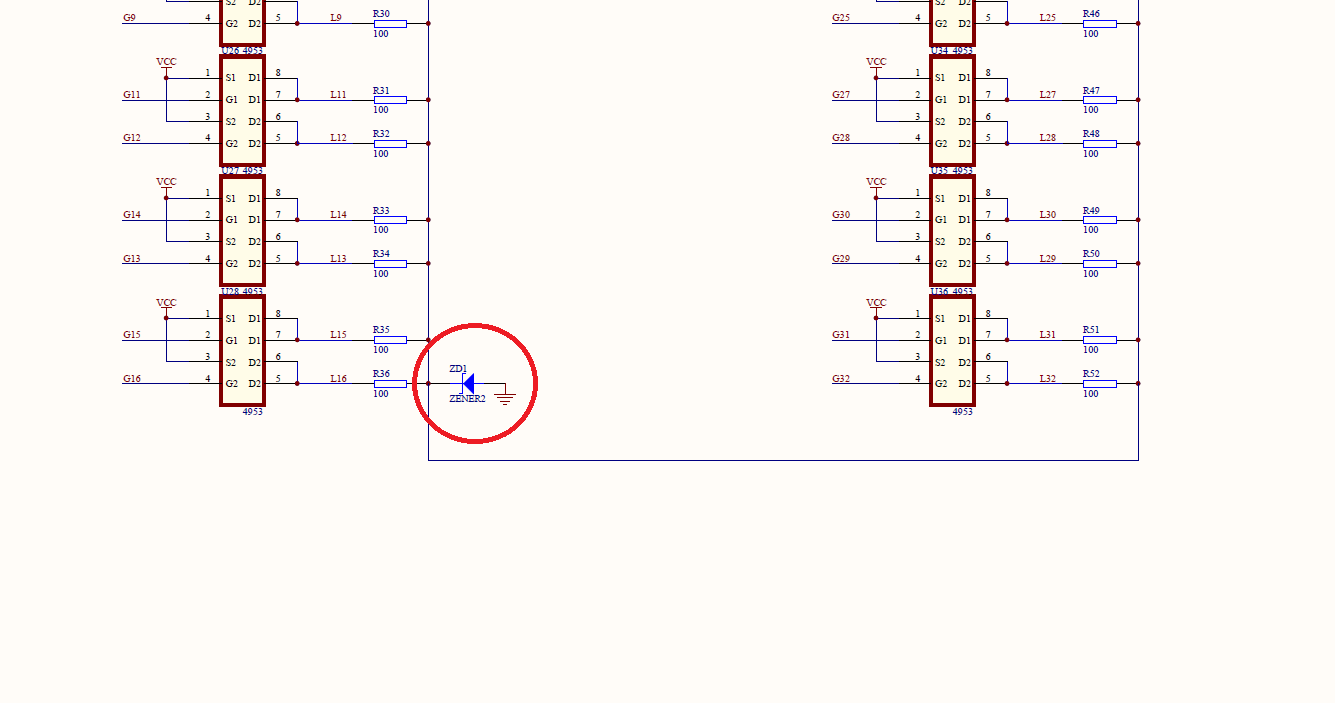Hello,
the below marked Zener is BZV55-C3V0 (according to TIDA-00161 BOM), has 3V working voltage, whereas the nominal voltage of the used RGB LEDs (HT-B3053FCH) can be up to 3.8V.
In this case the RGB (in fact the G and B) would not be properly driven with the sufficient voltage - is that correct, or are we missing something?
From a different post I saw the explanation that the Zener diode is there to prevent (clamp) excess voltage stress across the LEDs, though why would this particular type (with 3V) be chosen here then?
Thanks for the explanation.


